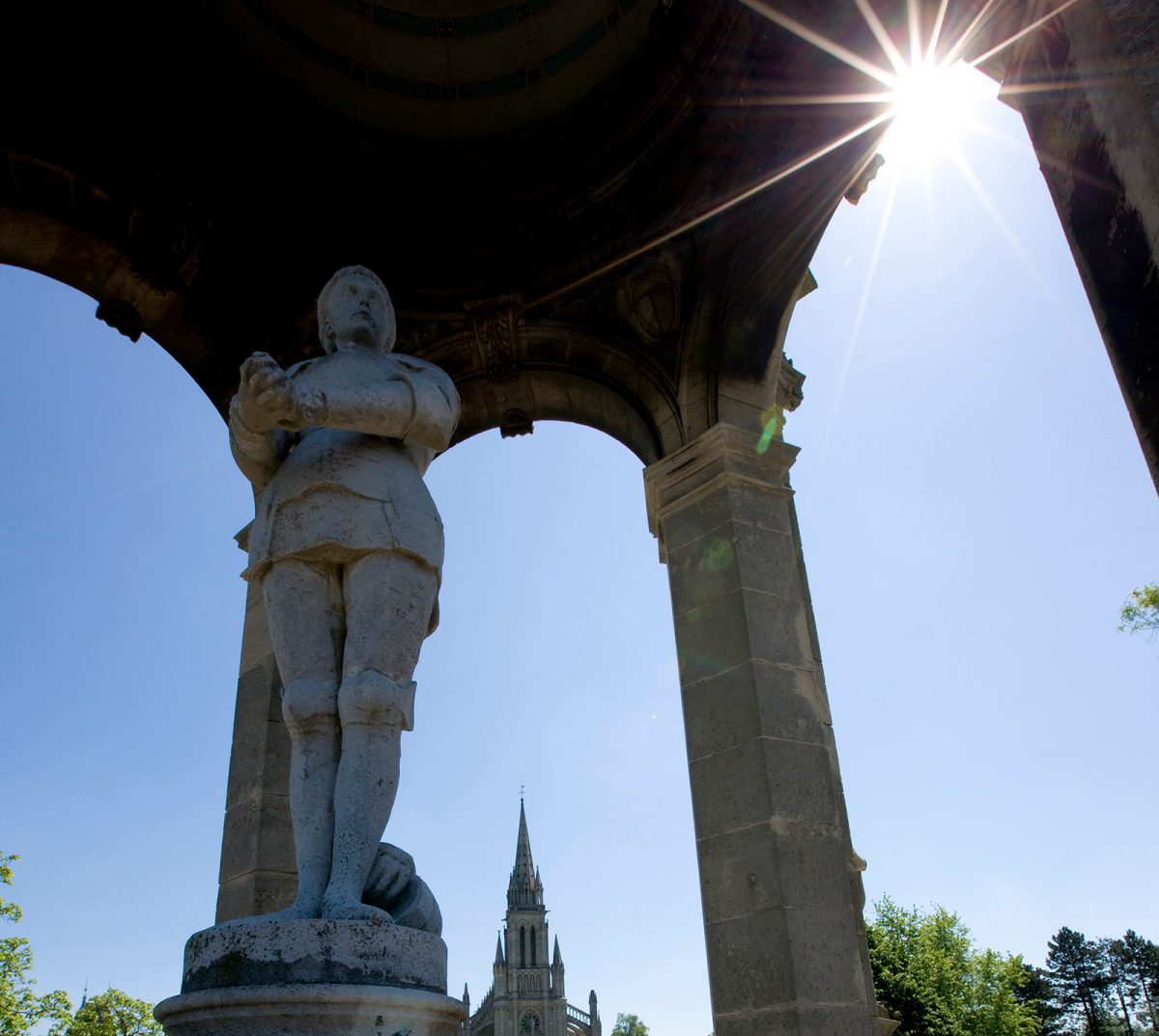Updated on 16 October 2020
Reading time: 2 minutes
Joan of Arc remains an outstanding and seminal figure in the history of the Hundred Years’ War, of Normandy and of France.
The liberation of France from English occupation
In 1337, when Edward III, King of England, renounced his claim to the throne of France in favour of his cousin Philip VI de Valois, war broke out. From 1417 to 1450, much of the French kingdom, including Normandy, was under the yoke of English occupation. It fell to a young 17-year-old peasant girl, Joan of Arc, to step forward and present herself at court to the beleaguered king Charles VII, declaring her divinely inspired mission to deliver France from the perfidious English. She led French troops to victory, lifted the siege of Orléans and paved the way for Charles’ coronation as King of France in Reims cathedral.

Burnt at the stake in Rouen
On 23rd May 1430 the pro-English Burgundian party of the day captured her at Compiègne. In December the Bishop there ordered that she be transferred to the tender mercies of the English in Rouen where she was tried and condemned to death by burning. The charge was heresy, since she had been tricked into putting on men’s clothes whilst in prison – and cross-dressing was not the done thing in the XVth century! On 31st May 1431 she was publicly burnt on the Place du Vieux-Marché. This inspiring figure galvanised Charles VII to muster the people and in time the English would be driven out after the battle of Formigny in 1450. In 1456 Joan of Arc was helpfully rehabilitated following a retrial. In 1469 King Louis XI, in a highly charged act before the assembled great and the good of the Duchy, had the ducal ring smashed in two on an anvil. The Duchy of Normandy had ceased to exist.
